Spatial
Georgia Pope Ephemeral Vines
-
Tauira / Student
Georgia Pope -
Kaiako / Lecturer
Tobias Danielmeier
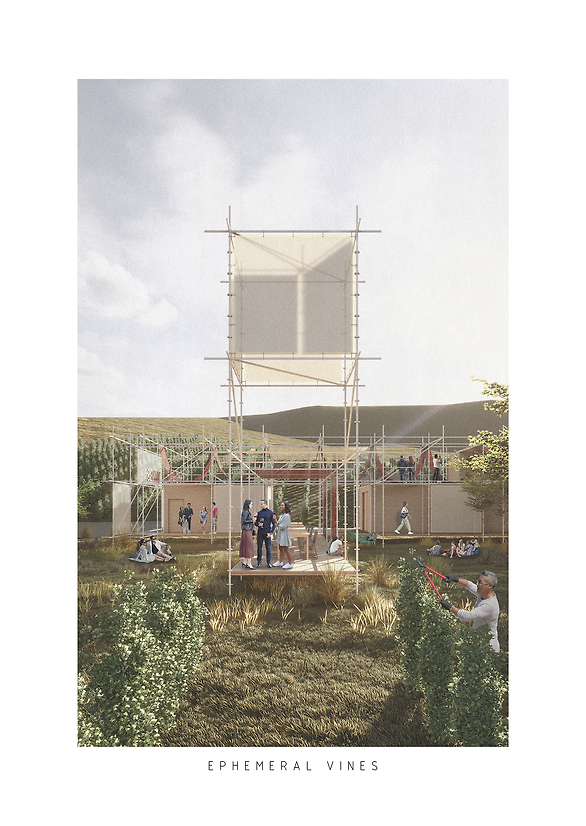
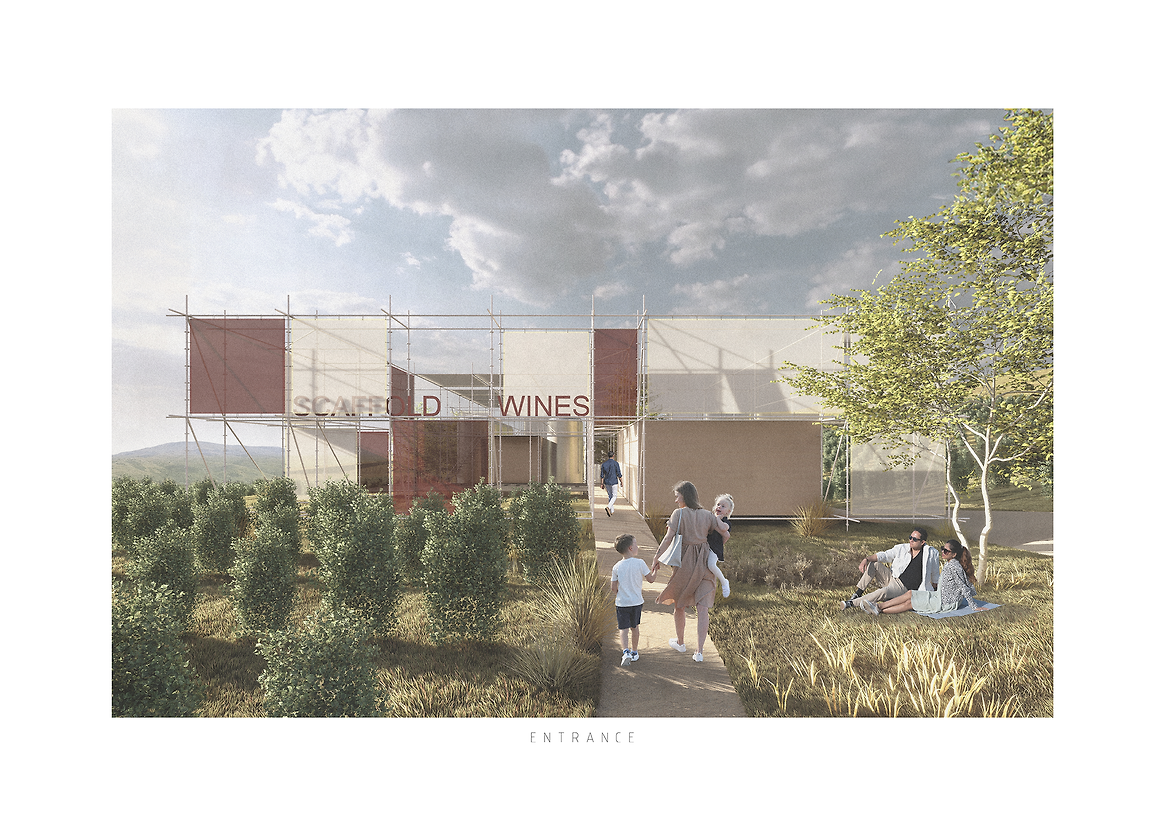
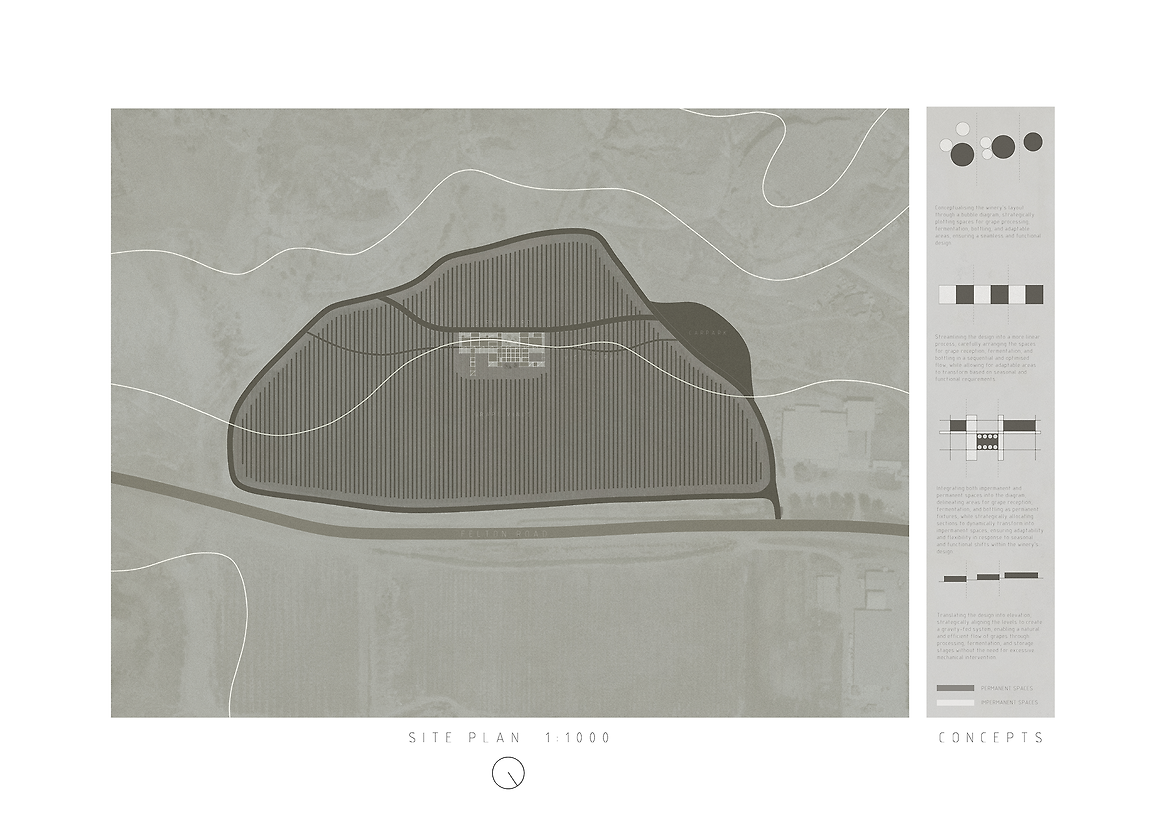
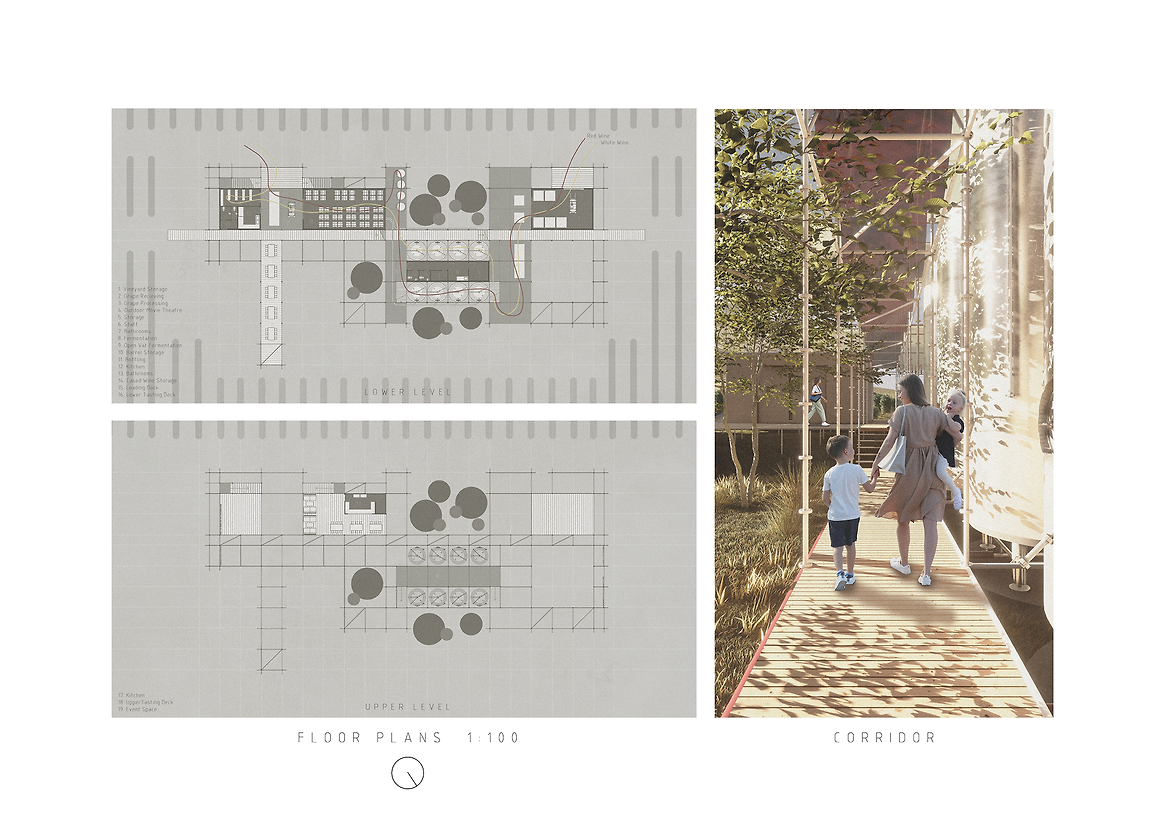
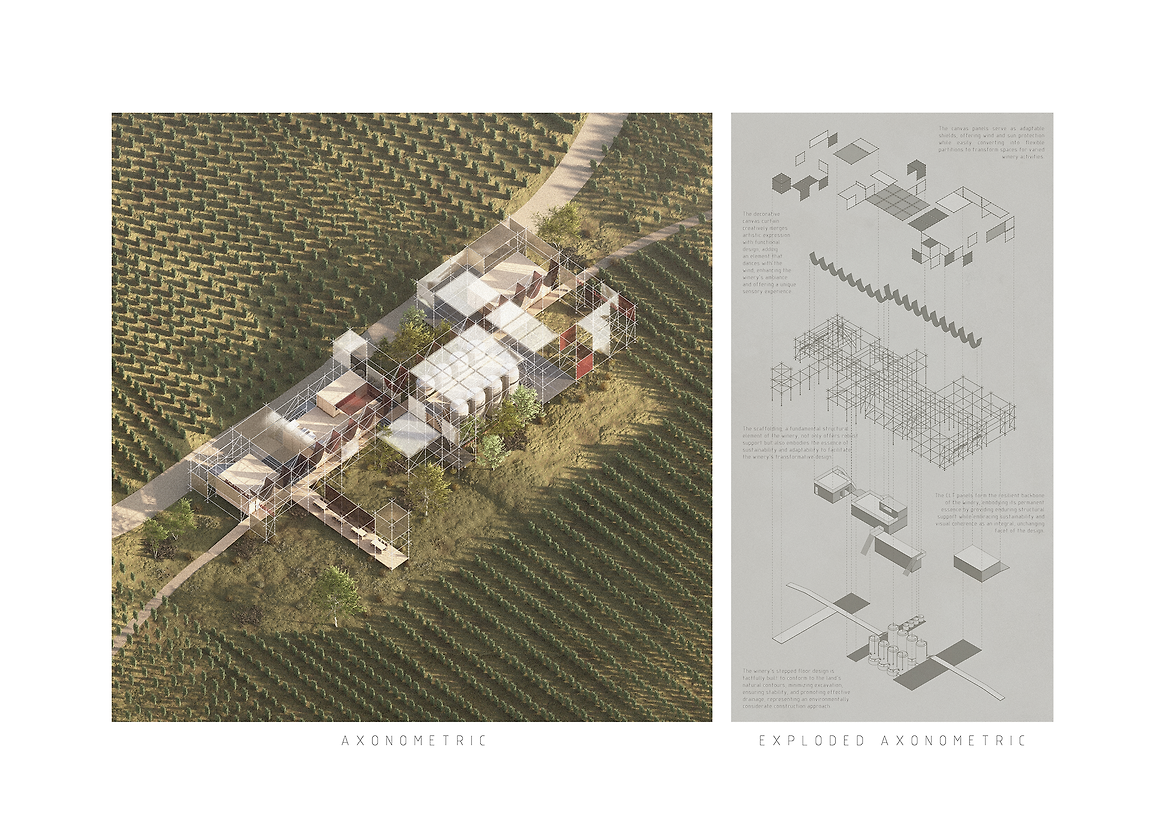
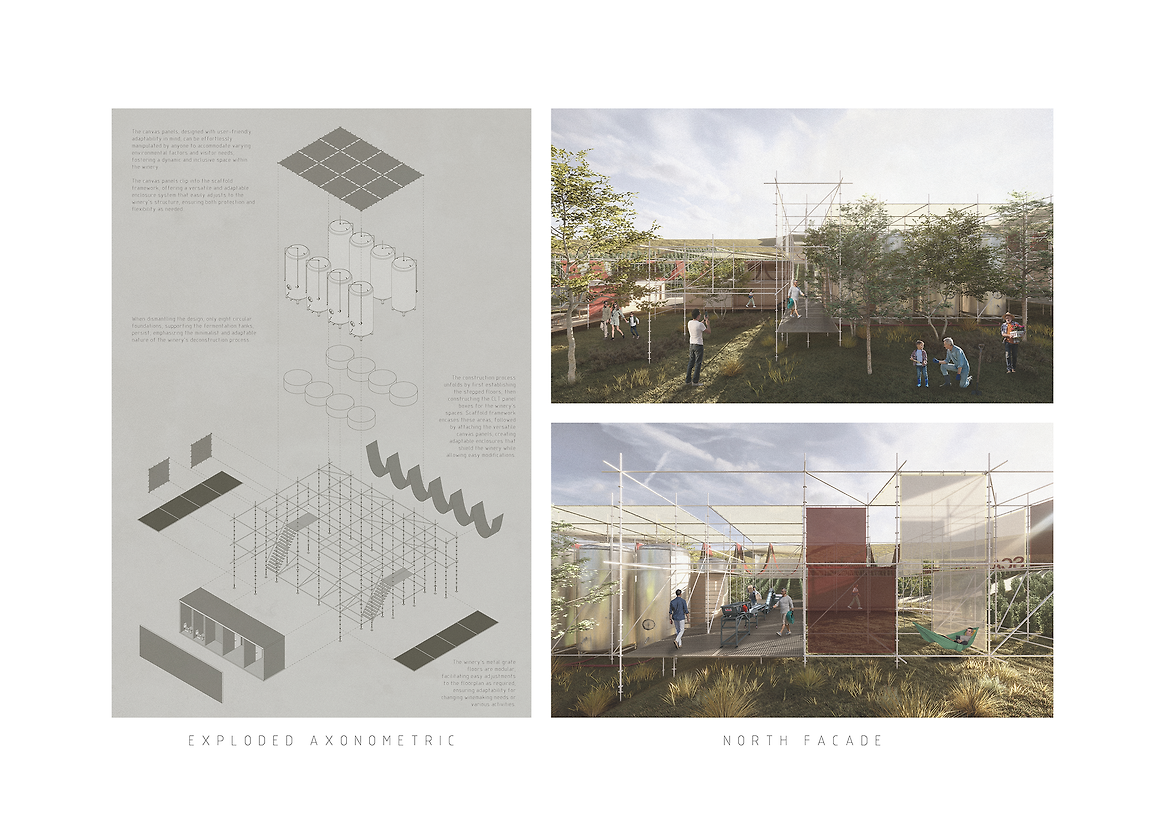
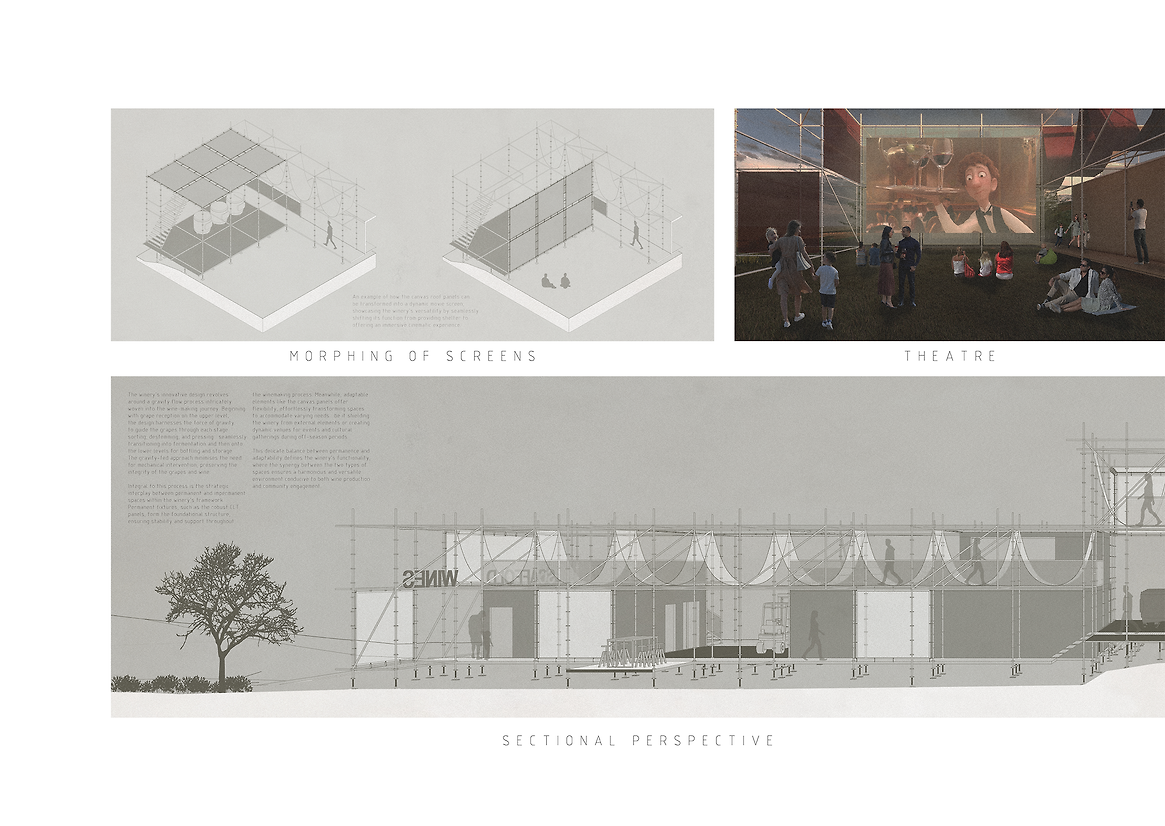
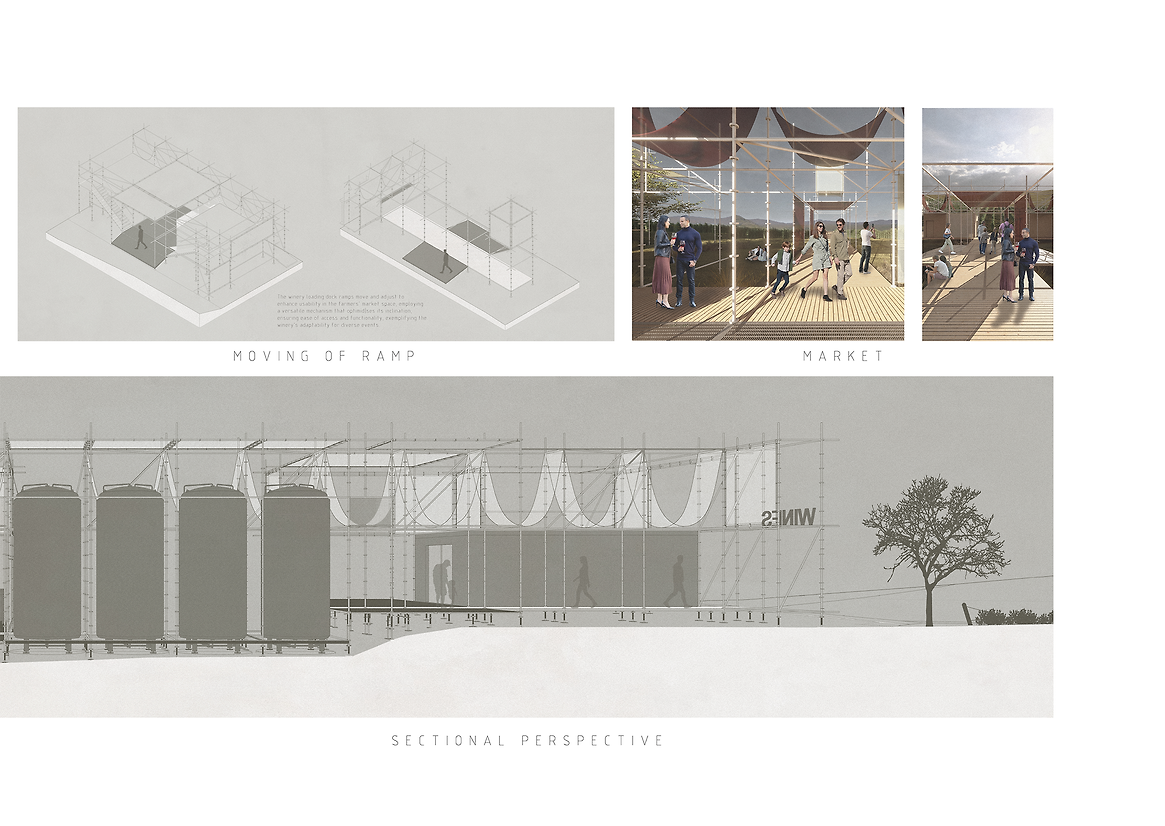
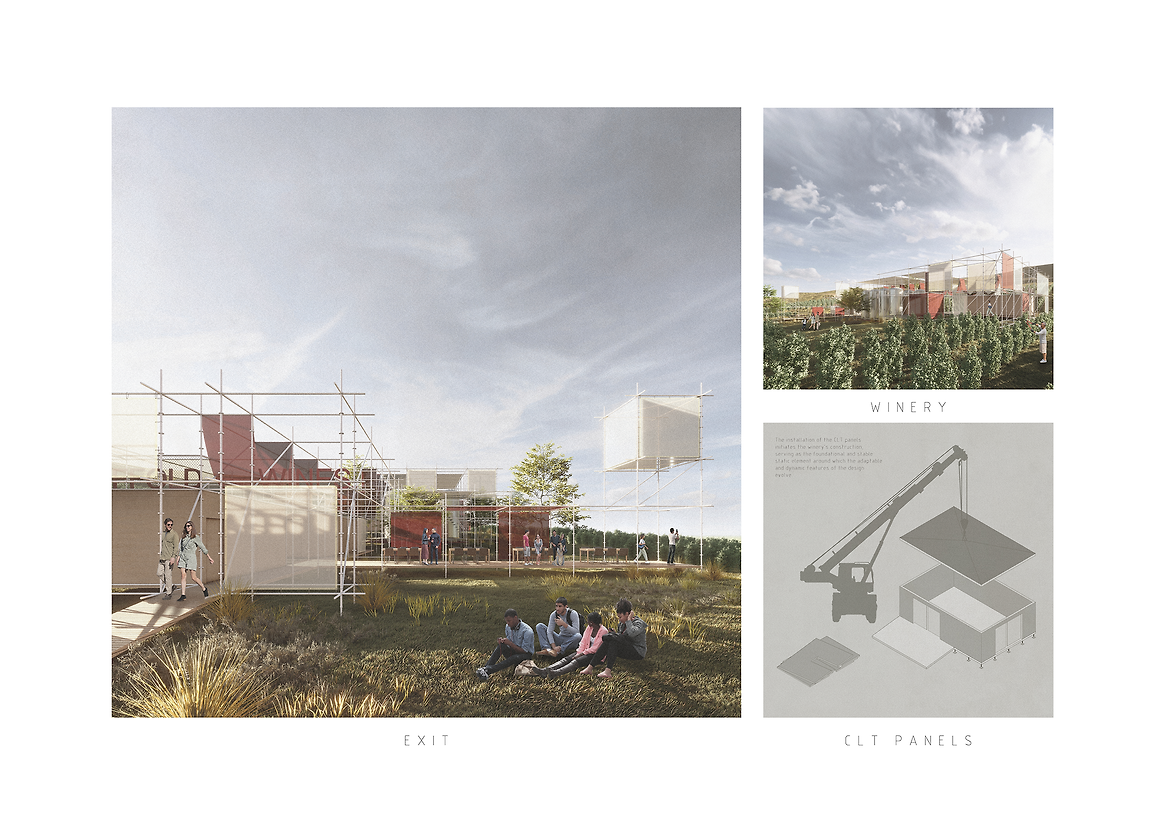
Description:
Nestled within the rugged embrace of Bannockburn's landscape, Ephemeral Vines stands as a testament to innovation in winery design. Far from conforming to traditional paradigms, it boldly embraces adaptability and multifunctionality, emerging as a symbol of sustainability and flexibility in the realm of viticulture. Through the thoughtful integration of recycled scaffolding and cross-laminated timber panels (CLT), this three-tiered structure redefines the notion of permanency, repurposing spaces into vibrant community hubs during off peak winemaking seasons.
In the tapestry of New Zealand's winery landscape, exclusivity often casts a shadow, isolating these estates from their local communities. Ephemeral Vines, however, shatters this barrier, extending an open invitation to all who seek to connect with the land and its offerings. By transforming dormant spaces into bustling centres of activity, it becomes a year-round beacon, fostering community engagement among locals and visitors alike.
The seasonal ebb and flow of winemaking presents a unique challenge—one that Ephemeral Vines meets with ingenuity and grace. As grapes and visitors ascend its tiers, they are greeted by a symphony of functionality and form, seamlessly adapting to the shifting rhythms of production. Winemakers and visitors move amidst the layers of scaffolding and fermentation tanks, creating an immersive experience. Canvas screens and large deciduous trees are strategically used to moderate temperature and sunlight, optimising conditions for fermentation. This dynamic evolution of the winery showcases its ability to adapt to seasonal changes and the various stages of winemaking.
On the third level, visitors find a harmonious blend of functionality and community engagement. This space houses the essential processes of bottling, barrel storage, and tasting areas. As barrels age gracefully and flavours develop, the atmosphere exudes a sense of tranquillity and anticipation. However, when not occupied with tastings or bottling, these versatile spaces adapt to serve the community in a different capacity. With the addition of canvas screens and CLT panels for flexibility, they seamlessly transform into spaces for bustling farmers' markets. Here, locals gather to enjoy the offerings of the land, enhancing community connections and engagement during quieter winemaking periods. It's a practical yet inviting space that caters to both the needs of winemaking and the desires of the community.
At the heart of Ephemeral Vines lies a commitment to sustainability and responsible stewardship of the land. Through the cyclic repurposing of materials and the modular nature of its construction, it leaves behind no permanent imprint on the landscape. Recycled scaffolding and CLT panels breathe new life into each iteration of the winery, minimising waste and reducing its carbon footprint with each transformation. The modular design facilitates easy dismantling, leaving behind no permanent structures and preserving the natural landscape. Moreover, the modular construction enables effortless scalability to accommodate future needs, further diminishing the demand for new materials.
In fostering community and belonging, Ephemeral Vines emerges as more than a mere winery. By inviting participation in both winemaking processes and vibrant events, it creates a sense of ownership and pride among its users. Here, amidst the vines and the lively exchanges, Ephemeral Vines expands its role, morphing into a vibrant and welcoming hub for all who wish to be part of its journey.
Judge's comments:
An evocative project that flips the premise of an exclusive wine-growing culture on its head by testing an idea of community engagement and activation to all. This delightful response boldly embraces a cradle-to-grave construction approach by the sincere incorporation of modular units, engineered timber and lightweight materials to minimise intervention on the land. Beautifully presented this project should be commended for challenging the norms with a scheme that is both innovative, and a careful weaving of the unique site and programme opportunities.